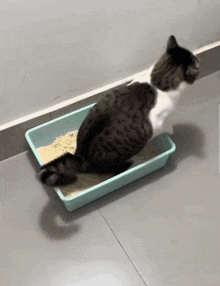School. Classes. Clubs.
Sports. Tests. Notes!
Notes are unarguably the worst enemies of every student, ever. Rarely do you stumble upon one who knows how to make the perfect notes, which look great and contain absolutely everything. These days, we focus more on the aesthetics, and forget about the quality of the actual notes themselves.
With the advent of digital note-taking, it has never been easier to make notes fast and focus on the actual study material. Here are some great websites and apps available for this purpose!
Let us slide into your dms 🥰
Get notified of top trending articles like this one every week! (we won't spam you)Why Digital Note-Taking?
When preparing for your tests and looking for your notes, the last thing you want to know is that you lost them, or worse, spilled something on them.
With digital note-taking, we can store our notes on the cloud, and access them on any device supported by that particular application. Also, no more bag load— just a single device would be enough!
Take the Quiz: What Type of Notes Should I Take?
Discover the best note-taking method for your learning style!
Best Free Note-Taking Apps
1. Notion
Notion is an out-of-the-world project and notes management app available on Windows, MacOS, Android, and iOS. You can easily take typed notes and make use of various formatting features and other creative elements like callouts and quotes! Imagine doing this through handwritten notes. How much fuss would we create after making one mistake?
Pros
- Great options
- Cross-platform availability
- Cloud Sync
- Both app and web-based
Cons
- Takes time to get used to it
- Unavailable offline
2. Microsoft OneNote
OneNote is a great alternative to Notion, and it comes with the added feature of doodling. If you have a stylus, then you can make your own diagrams too! Like Notion, it is available on all platforms, so you shouldn't have a problem in that regard.
Pros
- Draw tools with typing
- Highly organized system
Cons
- Limited search feature
- Slightly out-dated interface
3. Apple Notes
Apple Notes is available on all MacOS and iOS devices, and if you're using the same Apple ID, then the notes can sync across your devices, and you can access them everywhere! You can get your usual typing experience, along with the writing experience, using the markup options on the iPad.
Pros
- Comes in-built on all Apple devices
- iCloud Sync
Cons
- Unavailable on Windows and Android
4. Google Docs
Google Docs is a web-based app on Windows and MacOS, and the app version is available on iOS and Android. Here, you can organize all your notes by typing them out. It is quite similar to Word, and has all the features you would need for light note-taking in theory-heavy subjects.
Pros
- Easy to use
- Cross-platform
Cons
- Limited features
5. Samsung Notes
Samsung Notes is available on all Samsung devices, and often comes in-built on tablets. If you own a Samsung tablet, consider getting a generic stylus for cheap and study away!
Pros
- Decent tools
- Best note-taking experience on Android
Cons
- No proper stylus available
- Unavailable on MacOS and iOS
Best Paid Note-Taking Apps
1. GoodNotes
Cost: $7.99
GoodNotes is one of the best note-taking software, available on iOS and MacOS. It offers the best writing experience on the iPad, with a wide variety of tools. You can take your notes in notebooks and organize them into folders subject- or semester- wise.
Also, the handwriting recognition on this is just mind-blowing, so no more looking for a topic's notes at the last minute! Although it isn't free, trust me, it's worth it, and I'll vouch for it a million times!
Pros
- Superior writing experience
- Great handwriting recognition
- Shareable links
Cons
- Unavailable on Android and Windows
2. Notability
Cost: $8.99 for the first year, $11.99 for subsequent years
It is the bitter rival of GoodNotes in the note-taking industry, and you can find several websites and channels comparing the two. In a nutshell, GoodNotes has better tools and handwriting recognition, while Notability comes with an extra feature of audio recording. During long lectures, you can just turn on recording while taking notes and see exactly what your professor said when you wrote something. Based on how I've placed the two, I think you know whose side I'm on. Since there are two versions available for Notability, here's a round-off of the comparison between them:
Pros
- Syncs audio and notes
- Shareable links
Cons
- Not great at handwriting recognition
- Recurring payments
3. LiquidText
LiquidText is the best note-taking app for those of you who have very content-heavy subjects. It can allow you to annotate your textbook's PDF freely, and even go out of the frame. It can seamlessly recognize text and allow you to create relations.
You can directly import your lecture notes/slides too! Moreover, it's available on MacOS, iOS and Windows! You can use your mouse, trackpad, stylus, or any other input device and it is suited to everyone's needs!
Though there's a free version available, it is highly limited and is no better than a normal PDF editor. There are various paid plans (both recurring and one-time) available according to your device and version preferences. Check them out here!Pros
- Truly unlimited space with the ability to work outside the document
- No loss of context when searching for items
- Any file format (.pdf, .doc, .docx, .ppt, .pptx) can be directly imported.
- Syncs in real time across all devices
Cons
- Quite expensive due to recurring plans (Life-Time plan available for $179)
- Unavailable on Android devices
This concludes my list of the best note-taking apps for students in high school and college. Hope you found your new go-to for the school year!





.jpg)



%202-min%20(1).jpg)

.jpg)




